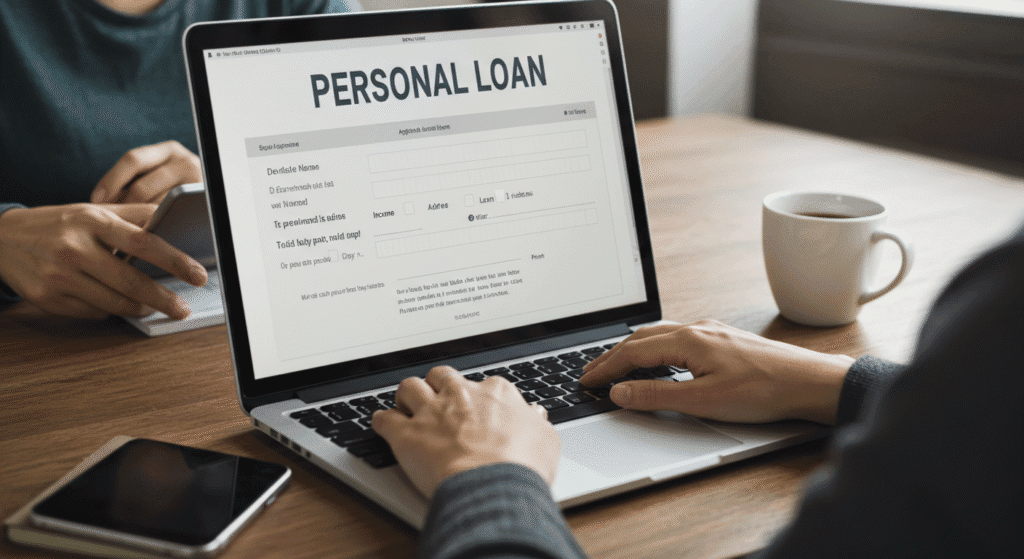Key Takeaways
- Personal loans offer flexibility for many financial needs but should be approached with careful comparison and awareness of terms.
- Understanding eligibility, credit impact, and all fees is vital for sound borrowing decisions.
- Reputable lenders like Symple Lending can help guide borrowers, but consumers must still do their due diligence.
- Recent economic trends and evolving lending standards can impact offers and approval odds.
Understanding Personal Loans: A Foundational Overview
A personal loan is a lump sum of money borrowed from a bank, credit union, or online lender that you repay in fixed installments over a set period. These loans are used for a variety of purposes, such as consolidating debt, paying for home improvements, funding major purchases, or covering unexpected expenses. Many borrowers choose personal loans for their flexibility and predictable payment structure.
There are two main types of personal loans: secured and unsecured. Secured loans require collateral, such as a car or savings account, while unsecured loans do not. Most individual loans are unsecured and are based on your creditworthiness. Working with a reputable provider like Symple Lending can offer insights into which loan type fits your needs and ensure a smooth borrowing experience. It’s important to compare different loan options and understand the terms before making a decision. Additionally, paying attention to interest rates and repayment periods can help you manage your finances effectively. Always consider consulting a financial advisor to determine the best borrowing strategy for your situation.
How Personal Loans Work: The Borrowing Process
Personal loans typically involve an online or in-person application, requiring personal information, employment details, and the loan amount. Minimum eligibility requirements include being at least 18 years old, having a steady income, and maintaining a good credit score. A credit check is crucial for evaluating repayment ability. Having supporting documents like pay stubs, tax returns, and identification can expedite the process. Staying informed about financial products and responsible debt management can also help borrowers.
Key Factors to Consider When Comparing Offers
Interest rates and APR significantly impact loan costs, including fees and other charges. Repayment terms range from 12 to 60 months, with longer terms resulting in lower monthly payments but higher interest. Houston Fraley recommends looking for lenders offering flexible terms, including penalty-free early repayments. Personal loans may come with origination fees, prepayment penalties, and late payment fees. Review the fine print and ask for a complete breakdown of charges before signing.
How to Choose the Right Personal Loan for Your Needs
To evaluate lenders, define your financial goals and consider their strengths, such as competitive rates or customer service. Evaluate a lender’s reputation through customer reviews, BBB ratings, and transparency in communication. Read the full loan agreement and ask questions to understand your obligations. For more tips, read NerdWallet’s comprehensive guides to make informed decisions and avoid common pitfalls.
Also Read
Tips for Improving Your Chances of Approval
- Boost Your Credit Score: Timely bill payment and reducing existing debt can raise your score, making you a more attractive borrower.
- Lower Your Debt-to-Income Ratio: Lenders want to see that you can comfortably handle new debt. Pay down outstanding balances where possible.
- Prepare Your Documentation: Gather proof of income, employment, and identification ahead of time to streamline the application.
The Pros and Cons of Personal Loans: Making an Informed Choice
Advantages for Borrowers
- Can be used for almost any purpose
- No collateral required for unsecured loans
- Fixed repayment terms and predictable monthly payments
- Potentially lower interest rates compared to credit cards
Potential Risks and Drawbacks
- Higher rates for borrowers with poor credit scores
- May include originations, prepayment, or late fees
- Failure to repay can harm your credit score and lead to collections.
When to Avoid Personal Loans
- When the purpose is non-essential spending
- If repayment would be a strain on your budget
- When the fees and rates are not competitive
Staying Informed: Personal Loans in Today’s Economy
The personal lending landscape is increasingly dynamic, with lenders adapting to consumer needs and economic fluctuations. Fixed rates have risen in the current environment, making comparisons between lenders more critical than ever. Stay updated on the latest personal finance news via publications like CNBC’s Personal Finance section to make timely, well-informed choices.
Anticipate that higher interest rates will affect borrowing power and consider the total cost of a loan before proceeding. If you’re in doubt, financial advisors or nonprofit credit counseling services can provide valuable, objective advice.
Conclusion: Building Financial Confidence With Smart Borrowing
Personal loans can be a strategic solution for major expenses, debt consolidation, or individual investments, provided you understand terms, assess repayment ability, and choose reputable lenders. Develop a responsible repayment plan and leverage credible resources to ensure the best outcome. This process will strengthen financial confidence and long-term stability. For more information, consult with certified financial professionals or explore in-depth articles.
